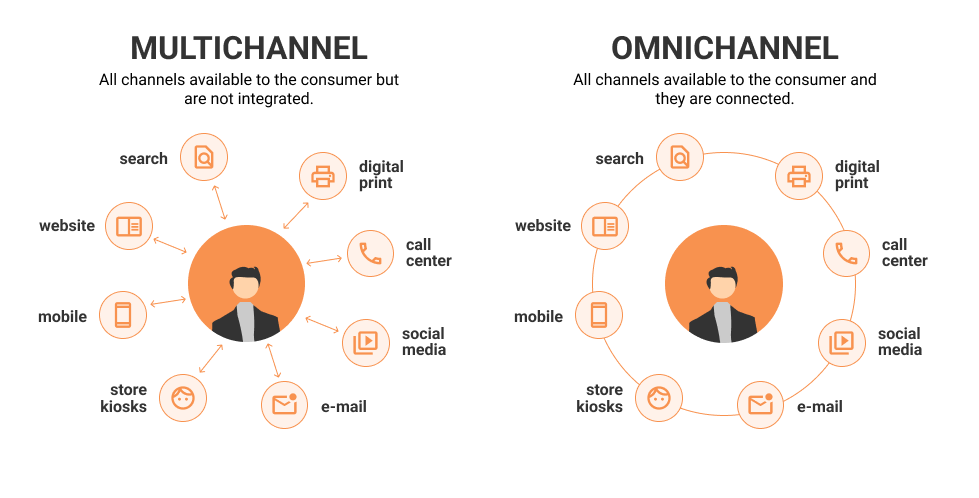Successful Conversational AI (CAI) solutions give users the ability to engage with businesses and brands when and how they want to. The control for engagement is with the user – no more waiting in long phone queues or having to visit a branch office to get things done. All of the information is at the user’s fingertips or voice call – or can be, so long as the information needed to provide value is available to the user.
Table of Contents
What does a non-integrated solution look like?
When we consider a Conversational AI chatbot solution without integration, it is not as engaging. In many cases, there are locked linear conversation flows that have limited functionality. They usually answer FAQs, provide some general support for contact information and answer some of the repetitive questions that cause noise to live agents (such as hours of operation), but your users simply don’t get the best value out of the Conversational AI experience. Why?
Because it’s pretty generic.
There is no level of personalization. There is no making the bot about being able to help and assist with the detailed challenges the user is experiencing.
For some organizations, this is enough. But businesses that want to focus on customer engagement and success, more is needed. And to do more, enhancing the experience to not just provide information to the user but also to assist them with performing actions and providing customized, detailed information is key. And the only way to do that is to integrate with other systems.
What Does Integration Mean with Conversational AI Solution?
When we consider a Conversational AI chatbot solution, we already have some level of integration built in. We have the code for the actual bot and we have the Natural Language Understanding (NLU) service which drives the understanding of the user requests. The bot needs to talk to the selected NLU and that requires communication between the two services.
With monolithic technology solutions, everything is located in one large piece of software and generally within a single database. When this occurs, integration may not be needed because the system has access to everything it should need directly within its own borders. But monolithic web development has its challenges – it’s more complex to maintain and deploy components in isolation – in many cases (not all), it’s an all-or-nothing delivery and maintenance approach.
Today, as cloud computing and global scalability continues to propagate, software is built with a service-oriented approach, with each service being focused on doing just one thing or a small set of related activities. This type of disconnected design allows for reusable and more scalable services, allowing smaller pieces to be updated, maintained, and deployed more rapidly.
And with this disconnected service architecture, some type of communication is needed to allow these disjoint systems to engage and speak with one another. They can be sibling services within an organization that are maintained independent of one another to perform certain unique actions, perhaps maintained by different teams. They can be external systems that a Conversational AI chatbot solution needs to extract or send data into to achieve an objective. It doesn’t matter – the point is that a path and method of communication is necessary to achieve its objective.
How to integrate a Conversational AI solution?
The easiest way to connect to services is via an Application Programming Interface, or API. This API effectively defines what is possible to do with the system on the other side – is it read only, is it full access to write data, etc. It is the gatekeeper of how a tool can interact with other tools and outlines the contract in which a solution is opening up a window in which other services can engage and perform some level of action with it.
What happens behind those doors can be completely black-boxed. The service requesting to engage doesn’t need to know what’s going on back there, and it’s probably best that they don’t. As software continues to evolve, rapid functional and architectural updates occur that allow for growth and scalability without impacting external resources. For example, a migration from one database to another may occur inside that black box. Is this relevant to the system that’s making the call? No, all the caller wants to know is when they make the request that they get the information they are expecting back.
In many cases, the API exists as a separate layer between the two systems. It creates abstractions as to how it interacts within that black box, so that systems and any proprietary information or business logic stays isolated. There’s no sense in showing all of the secrets of a solution, but the API interface allows systems to engage without knowing those details. I’ve already described what is exposed in the API as a contract and that is essentially true. By identifying what is being made available through an API, a system is committing to provide access to data through those interfaces. This allows for a contract to be in place so that a caller has an expectation of services available and expectations are managed.

For many services, you need to know who is connecting. Authentication is generally the first step in any contract when requests are made. For generic information, authentication may not be required but a key of some sort is provided so that an understanding of who is using the data and the volume of requests can be managed and monitored. But if you need private information, such as customer information, then an additional level of authentication is needed. This ensures that the information returned is acceptable based on the credentials of the caller. From a security perspective, this is highly important since contracts are generally binding agreements and an organization wants to ensure that its data is kept secure and is accessible only to authorized individuals.
What Types of Data can Conversational AI Consume?
Anything. No, seriously, anything. You will want to ensure that it’s in a format that makes sense for the conversational flow and that it is engaging to the user, so a proper amount of conversational design is needed to choose the right pieces of data, but really any data can be utilized.
With a Conversational AI chatbot solution, there are some key items that can be incorporated to create value-based experiences for your users:
- CRM integration allows for a personalized experience for users. If you’re looking up or updating user information such as address and phone number, or you want to identify previous orders of a user, the CRM will have access to that information.
- Inventory services for when you want to identify how much of a product is in stock and which stores have them in stock.
- Offer information for commercial activities, providing information such as cost, contract period, terms and conditions, and availability.
The ability to pull all of this information into a single system provides a more personalized experience for the end user. If they can get offers that are relevant to them based on previous buying habits, which is available in their CRM, and can see which location has them in stock, the value of that conversation increases significantly than just saying “contact your local retailer for availability”.
The Value of Omnichannel Customer Experience
A Conversational AI system is only as strong as its reach. And how people are engaging continues to evolve.
When Conversational AI first came to prominence, it was through a web widget. Now, an omnichannel approach for organizations is important as you want to reach your users where they are and where they want to and can engage. Most of these channels are independent of one another and require the ability for the bot to communicate through them, and that requires an integration of another sort: channel integration.
So, in addition to API and chatbot integrations, offering robust client portal features can enhance customer interaction by centralizing client requests, communications, and updates in one accessible interface.

For each channel, you need to understand the capabilities so that you can expose and engage in just the right fashion. With many channels, you can incorporate multimedia and engagement buttons to drive the conversation and make it easier for the user, while at the same time not restricting them to just those options. But in other channels, such as SMS, those engagement options are not available and as a result your conversational approach needs to change.
This is just one simple example, but it can be used to illustrate how complex these integrations can be. An SMS integration may be as simple as a destination phone number and a message body, but an Apple Business message may include a slideshow of sales options and commerce opportunities built in. The level of integration needed, and the design needed to support a value-added engaging experience, are significantly different for both. And how you integrate with Apple Business will also be different than Instagram which will also be different than Snap, and as each continues to evolve their service offerings you will see the engagement opportunities continue to change.

Conclusion
Any Conversational AI chatbot solution has one objective: to allow a user to do something effectively and efficiently through a conversational interface.
Integrations make this possible. Extracting data from multiple sources and bringing them into a structured format for use by the Conversational AI brings immense value to the end user, allowing them to create and utilize a highly personalized experience. Knowing the channels that are being integrated with continues to enhance that personalization, by offering the experiential elements that make the most sense to users.
Determining which data is required and identifying the appropriate data source should occur at the beginning of the design activity for a use case. Understanding early on the APIs needed to extract data from – or if a custom integration needs to be developed if there is no existing availability to the data source – allows you to design and craft the most valuable experience for the users.
At the end of the day, the key is to give value to your end users. Make their lives easier and provide a structured and efficient way to do it at their convenience – when and where they want it.






